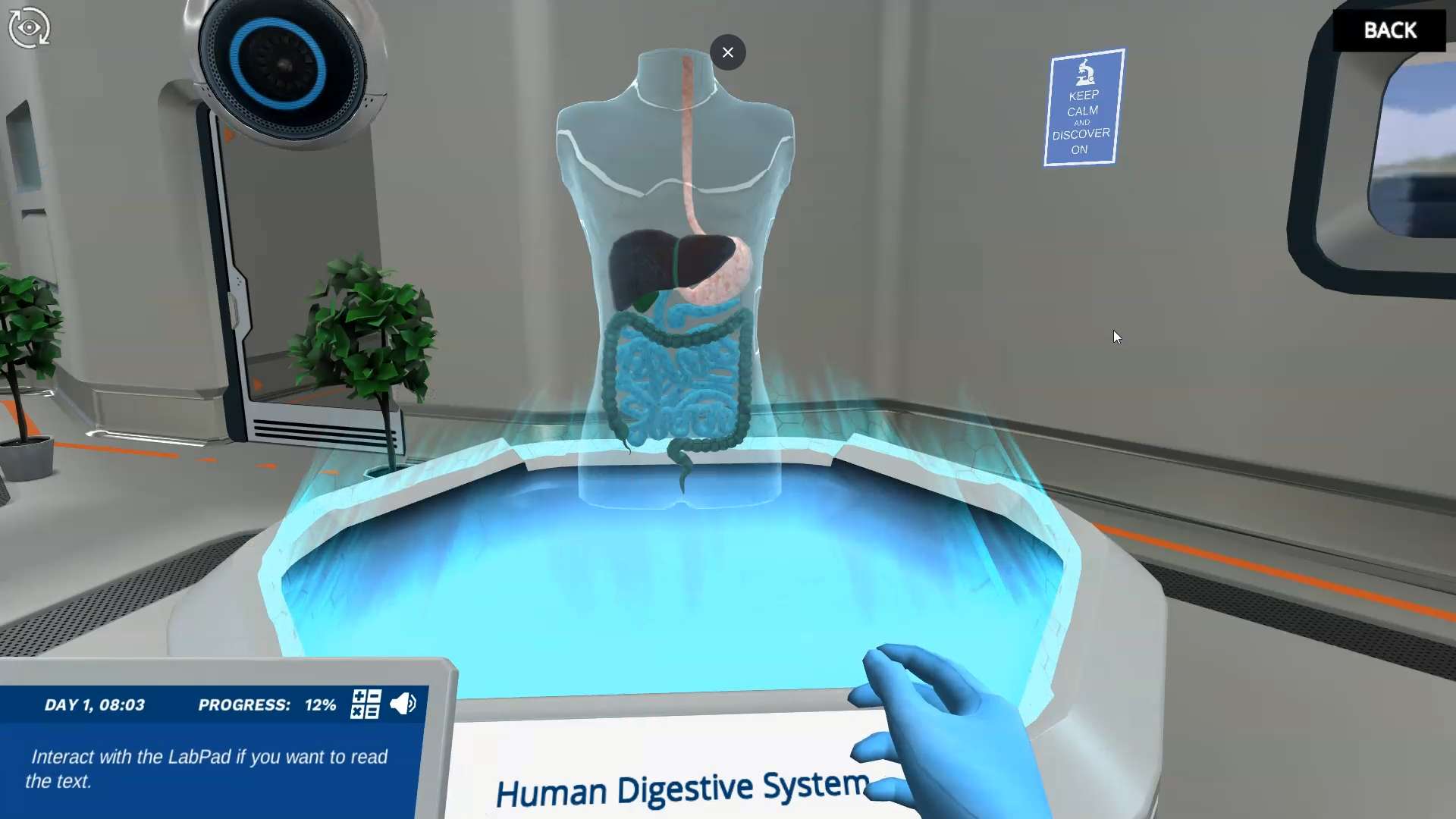Heading 1
Heading 2
Heading 3
Heading 4
Heading 5
Heading 6
Lorem ipsum dolor sit amet, consectetur adipiscing elit, sed do eiusmod tempor incididunt ut labore et dolore magna aliqua. Ut enim ad minim veniam, quis nostrud exercitation ullamco laboris nisi ut aliquip ex ea commodo consequat. Duis aute irure dolor in reprehenderit in voluptate velit esse cillum dolore eu fugiat nulla pariatur.
Block quote
Ordered list
- Item 1
- Item 2
- Item 3
Unordered list
- Item A
- Item B
- Item C
Bold text
Emphasis
Superscript
Subscript
About This Simulation
Join a physiology laboratory to understand how smooth muscle contracts by performing several in vitro experiments, and help your friend identify the cause of her intestinal pain.
Learning Objectives
- Describe smooth muscle characteristics
- Explain the autonomous nervous system (sympathetic and parasympathetic) control of smooth muscle
- Identify which neurotransmitters and receptors are involved in smooth muscle contraction
- Use the equipment and interpret the results from the performed experiments
About This Simulation
Lab Techniques
- Myography
Related Standards
- Potentially HS-LS1-2, however likely too high level
- No direct alignment
- 6.1 Digestion and absorption
- Biology D.2 Digestion
Learn More About This Simulation
Have you ever noticed a feeling of discomfort after a large meal? In this simulation, you will learn the basics of smooth muscle contraction and how it is controlled by the nervous system in order to provide more insight into the causes of a friend’s digestion issues.
Use animal models
Although smooth muscle is located in many different parts of your body, this session focuses on the smooth muscle that is located in the intestine. In order to understand how smooth muscle contracts, you will use an animal model that resembles the way smooth muscle works in humans. You will perform different experiments using pieces of rat intestine to evaluate the impact of several neurotransmitters and drugs on smooth muscle contraction.
Get your results in real time and dive into the sample
Learn about the purpose of different parts of equipment in the physiology lab, and discover the importance of the composition of reagents and conditions in conducting experiments with reliable results. You will be able to use different reagents that resemble the control of the nervous system as well as other drugs that modify the smooth muscle contraction. On top of this, you will be able to observe the outcome in real time via your virtual PC screen.
In addition, every time you test a new reagent, you will be able to visualize the results at a cellular level, understanding the changes in the concentration of different molecules and the interaction with the specific receptors to trigger different events, which will ultimately impact the smooth muscle contraction.
Identify the cause of the intestinal pain
At the end of the simulation, after testing your hypothesis and performing all the experiments, you will have a clear understanding of how smooth muscle contracts.
Will you be able to identify the cause of your friend’s intestinal discomfort?
For Science Programs Providing a Learning Advantage
Boost STEM Pass Rates
Boost Learning with Fun
75% of students show high engagement and improved grades with Labster
Discover Simulations That Match Your Syllabus
Easily bolster your learning objectives with relevant, interactive content
Place Students in the Shoes of Real Scientists
Practice a lab procedure or visualize theory through narrative-driven scenarios


FAQs
Find answers to frequently asked questions.
Heading 1
Heading 2
Heading 3
Heading 4
Heading 5
Heading 6
Lorem ipsum dolor sit amet, consectetur adipiscing elit, sed do eiusmod tempor incididunt ut labore et dolore magna aliqua. Ut enim ad minim veniam, quis nostrud exercitation ullamco laboris nisi ut aliquip ex ea commodo consequat. Duis aute irure dolor in reprehenderit in voluptate velit esse cillum dolore eu fugiat nulla pariatur.
Block quote
Ordered list
- Item 1
- Item 2
- Item 3
Unordered list
- Item A
- Item B
- Item C
Bold text
Emphasis
Superscript
Subscript
A Labster virtual lab is an interactive, multimedia assignment that students access right from their computers. Many Labster virtual labs prepare students for success in college by introducing foundational knowledge using multimedia visualizations that make it easier to understand complex concepts. Other Labster virtual labs prepare learners for careers in STEM labs by giving them realistic practice on lab techniques and procedures.
Labster’s virtual lab simulations are created by scientists and designed to maximize engagement and interactivity. Unlike watching a video or reading a textbook, Labster virtual labs are interactive. To make progress, students must think critically and solve a real-world problem. We believe that learning by doing makes STEM stick.
Yes, Labster is compatible with all major LMS (Learning Management Systems) including Blackboard, Canvas, D2L, Moodle, and many others. Students can access Labster like any other assignment. If your institution does not choose an LMS integration, students will log into Labster’s Course Manager once they have an account created. Your institution will decide which is the best access method.
Labster is available for purchase by instructors, faculty, and administrators at education institutions. Purchasing our starter package, Labster Explorer, can be done using a credit card if you are located in the USA, Canada, or Mexico. If you are outside of North America or are choosing a higher plan, please speak with a Labster sales representative. Compare plans.
Labster supports a wide range of STEM courses at the high school, college, and university level across fields in biology, chemistry, physics, and health sciences. You can identify topics for your courses by searching our Content Catalog.


















